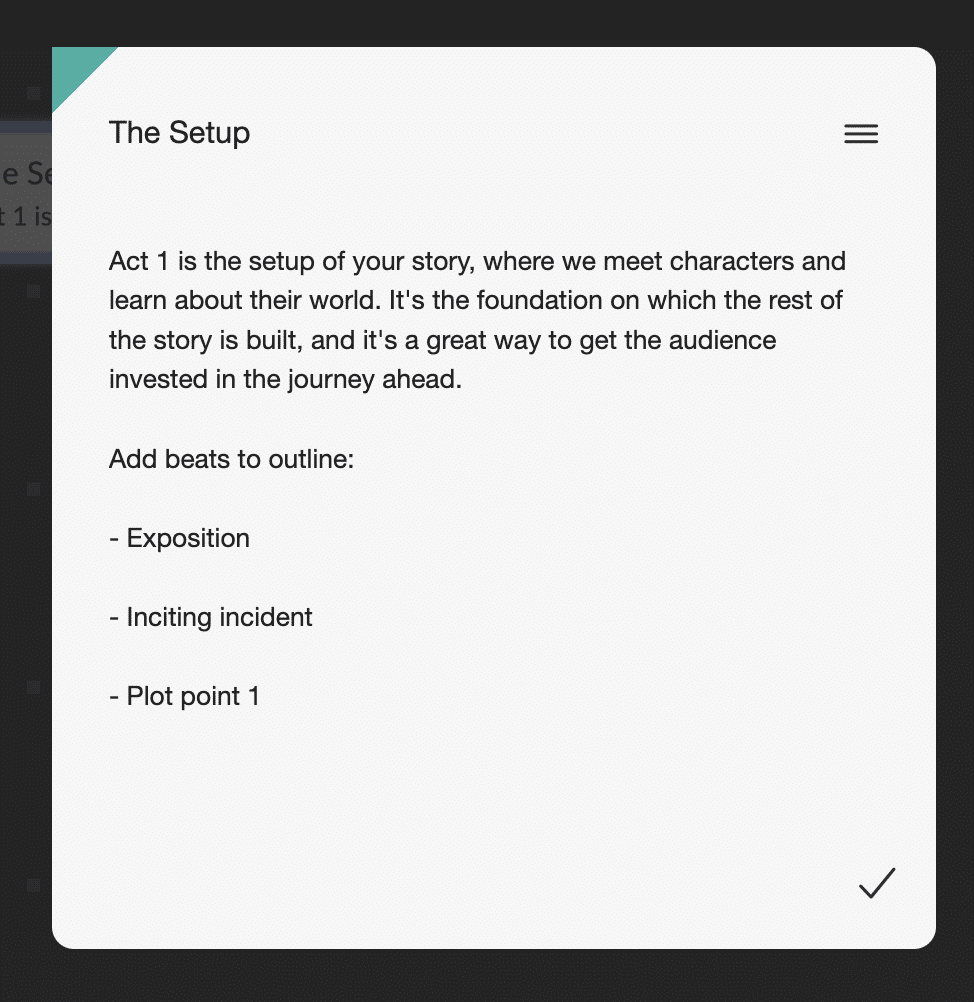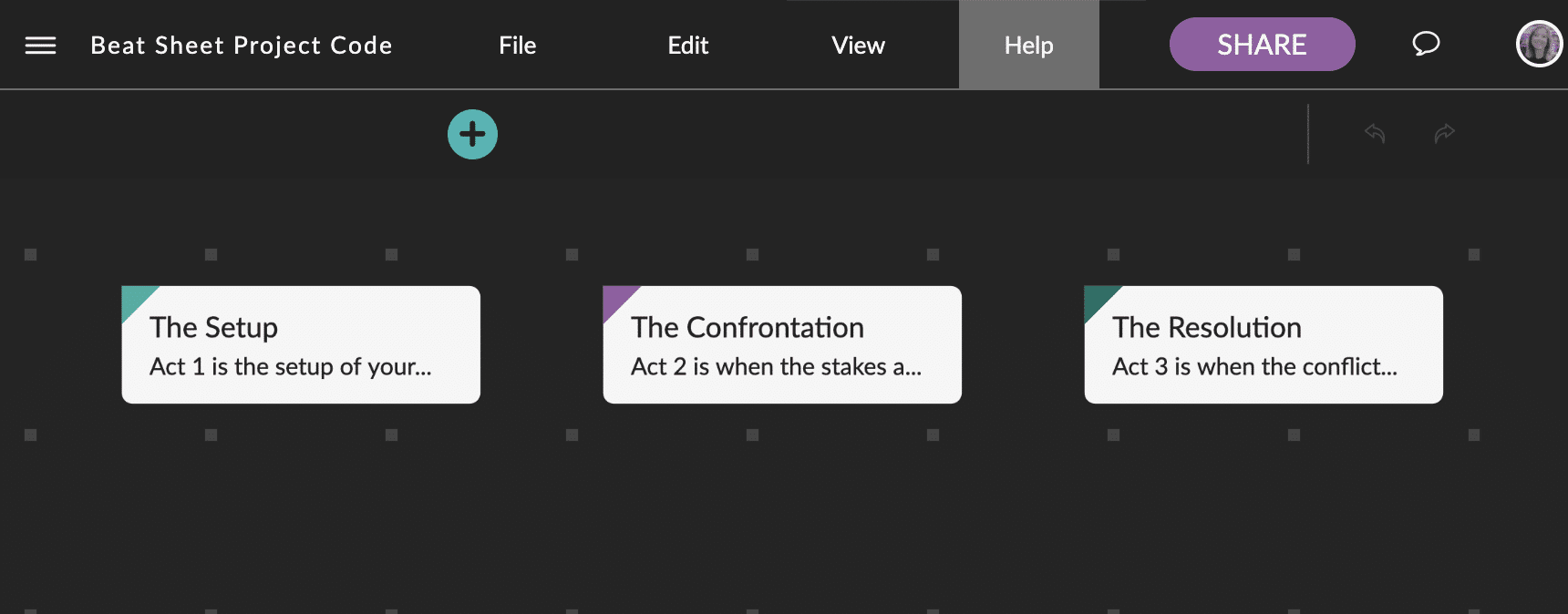
All screenwriters find themselves stuck at some point in developing and writing a script. This could be due to writer’s block, a lack of story thread, problems with characters, or in some cases, the feeling that something is missing.
Often, this gaping hole in your plot or character development could in fact be the absence of a scene or multiple scenes.
Let’s think of a screenplay as a jigsaw puzzle, each element a piece that slots in with the others to form the bigger picture. When a scene or scenes are missing, there are gaps in this jigsaw, leaving the story incomplete and your audience with unanswered questions.
In this article we will be exploring the art of recognizing and addressing missing scenes in your screenplay and how we, here at Celtx, along with our screenwriting tools and resources, can help.
So, let’s dive in!
The Impact of Missing Scenes
The quality of storytelling in your screenplay depends on many factors, the presence of key scenes detailing vital story beats, and character development being just two of them. The absence of such scenes can have certain consequences for how your story is delivered and then received by your audience.
Robert McKee describes story beats as scene builders: “scenes then build the next largest movement of story design: sequences.” (pg. 38, 2010) and these sequences must make sense and have no missing scenes.
Understanding how missing scenes can affect your screenplay is crucial in how you craft a compelling and coherent narrative that will keep your audience engaged.
Loss of a Clear Narrative
If your narrative is not coherent, your audience may find it difficult to follow what is happening. Important details about the plot or character may be missed, with no clear sequence of events. Your audience may then become frustrated and disengage completely from the message you’re trying to present.
Underdeveloped Character Arcs
Characters are at the heart of your story; they are the ones that guide your audience through the story and whom the audience roots for. If they cannot truly relate to your characters, especially the protagonist, you’ll lose them very early on.
Without scenes that delve into character motivations and struggles or show their growth, they can become one-dimensional, or their actions may seem capricious. The emotional connection your audience has with your characters is paramount to their investment in your story.
Issues with Pacing
The pace of a screenplay ensures your story flows well and is told in a way the audience can relate and understand. Missing scenes can disrupt this flow forming abrupt jumps between scenes or story threads. Your story may feel disjointed or rushed to a viewer.
On the opposite side of the coin, too much expository storytelling can slow the narrative down, risking the audience becoming bored very quickly. Achieving a balance can be difficult but can and should be achieved.

Unresolved Story Threads
There is nothing more frustrating to an audience than a character arch or plot thread being left unresolved. Every writer should ensure that loose ends are tied up and clear closure is provided. Of course, there are exceptions to this rule.
For example, in the movie Cast Away (2000), the audience never discovers what’s in the unopened parcel Chuck is left with after the plane crash. Cleverly crafted exceptions like this incite intrigue and excitement in the audience, and they leave the movie theater desperately debating what they think was in the parcel.
Similarly, in 2008’s The Dark Knight, the Joker’s scars are a huge part of his character. However, we never learn how he got them, despite him explicitly asking in the movie. This aspect only adds to the richness of his character and incites further intrigue from the audience.
Missing details can be a fantastic way to engage an audience, but these must be well crafted and make sense to the story.
Unreliable Tone and Theme
Every story has a tone and theme that must be easily identifiable from the plot and characters. They are essentially how the story is told. Missing scenes can disrupt this and even shift the tone and theme. Such inconsistencies can confuse and audience and undermine the work you’ve done in your story so far to get your message across. The audience relies on your clear vision of how your story is told.
Overall, your audience engagement is the center of your story’s success in whichever way success looks and feels for you as a screenwriter.

How to Recognize Missing Scenes
So we’ve talked about missing scenes and how they can affect your story, but just how do you recognize them in your own work and fix them?
Analyze Your Story Flow
Once you’ve completed the first draft of your script, read it through from start to finish and pay close attention to the overall flow of the storytelling. Check carefully for abrupt transitions or unexplained jumps in the storyline.
If you do identify gaps, make a note of them either on the script itself, or in a separate notebook. From there, you can work on your plot and fill in any missing detail or development.
Ensure Your Characters are Fully Developed
As we’ve already discussed, your characters are those your audience follows throughout your story. They are at the heart of and the reasons why events occur so their motivations and development should be clear.
Check that all your characters’ actions and decisions in every scene align with their background, ethics, general temperament and most importantly, their ‘why’ and drive in the story itself. If you find that a characters’ actions don’t make sense in line with what you’ve outlined for them in their backstory or their story motives, then it’s time to revisit them.
It could also be a sign that you need to add another scene that delves deeper into a particular character’s motivations, conflicts, or personal journey.
Tie Up Plot Threads
Unless you have planned deliberate cliffhangers and talking points for your audience like in Cast Away or The Dark Knight, keep an eye out as you write and during the editing process for unresolved plot threads or loose ends that have been left hanging without a satisfactory resolution for your audience.
Could one or two additional scenes or further development of a subplot help provide a more satisfying narrative closure?
Seek Feedback
We often talk about the importance of feedback and collaboration when writing. When you have analyzed and edited your script to a point where you’re happy for more eyes to see it, reach out to your peers or a script coverage service for some feedback and input.
Fresh eyes can be excellent at spotting gaps in your story that you may have overlooked and can provide a new perspective on how to improve your script, not just in terms of its plot, but in general.
Filling in Missing Scenes with Celtx
You’ve identified the missing scenes in your script but now it’s time to act! Let’s see how Celtx can be a game-changer in helping you complete a jaw-dropping, engaging screenplay.
First, make sure you sign up for your free Celtx account here, where you’ll have access to scriptwriting, story development, and production planning tools.
Beat Sheet
For every project you start in Celtx, you have access to planning tools designed to help you from idea inception to project completion. The Beat Sheet is one such resource, and helps you visualize, review, and refine the key structure of your story. Place down tiles in any order you like to design everything from plot threads to character arcs. Get a complete walkthrough of using the Beat Sheet here.
When you create beat sheets associated with a project for the first time, you’ll see three tiles have been pre-loaded as a suggestion of how to use the beat sheet to design your plot: The Setup, The Confrontation, and The Resolution.

It’s very simple to edit these tiles. Simply click on the tile you wish to edit.
For this example, we’ll choose The Setup.
Here, you can edit both the title and body of the tile. Even color code using the menu in the top right-hand corner.

Or, if you need to create a new tile, click on the + symbol.

If you need to add another scene or rearrange a character’s development arc, simply add or move tiles around into your desired order.
Collaboration and Revision Control
Asking for feedback from peers, mentors, or other trusted sources can help identify where a script needs attention.
In Celtx, you can share your projects, request review and approval, and and discuss the details with in-line commenting. Learn more about using these Celtx features in this blog.
Review and Refine
After incorporating feedback and making revisions, review the entire script to ensure that any missing scenes seamlessly flow within the narrative. As before, pay attention to pacing, continuity, and coherence.
Conclusion
In the world of scriptwriting, a complete and well-structured screenplay is the key to capturing your audience. Recognizing and addressing missing scenes is a vital step in achieving this goal.
So, whether you’re new to screenwriting or a seasoned professional, Celtx is here to elevate your scriptwriting. You’ll not only complete your missing scenes but also craft a screenplay that resonates with your audience!
Citations
McKee, R. (2010). Story: Style, Structure, Substance, and the Principles of Screenwriting. United Kingdom: HarperCollins.
Cast Away (2000). [Movie] Directed by Robert Zemeckis. 20th Century Fox and DreamWorks Pictures
The Dark Knight (2008). [Movie] Directed by Christopher Nolan. Warner Bros. Pictures
